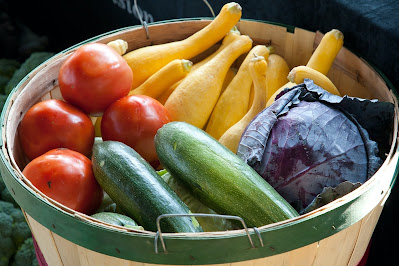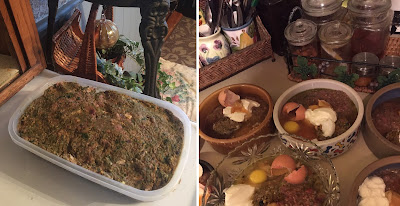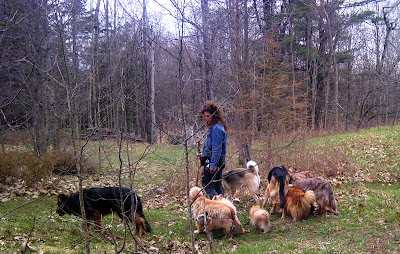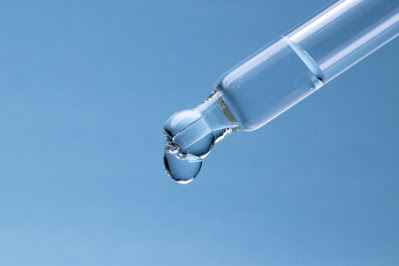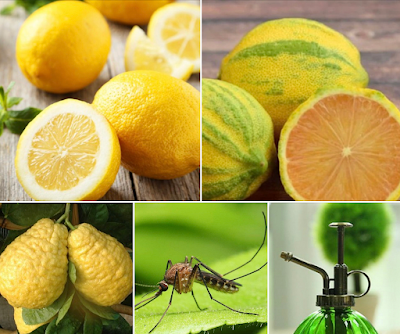Fresh and Raw Food Diet For Your Dog, Puppy, Cat and Kitten's Health - Species Appropriate Food, How to Select, Prepare and What to Avoid
★ 9.5 min read
In this article:
- Introduction
- The Best Diet for Your Dog, Puppy, Cat and Kitten
- Dogs are Carnivores and Consume Some Plant Material
- Cats are Obligate Carnivores
- Species Appropriate Diet for Your Dog, Puppy, Cat and Kitten
- The Best Diet Is
- Dogs are Carnivores That Eat Some Plant Materials
- Cats are Obligate Carnivores
- Species Appropriate Diet
- Components for Dogs and Puppies
- Components for Cats and Kittens
- When, How Much, How Often - Raw Feeding Puppies and Kittens
- When to Start Your Puppy and Kitten on a Raw Diet
- How Much to Feed Your Puppy and Kitten
- How Often to Feed Your Puppy and Kitten
- How Much, How Often - Raw Feeding Adult Dogs and Cats
- How Much to Feed Your Adult Dog and Cat
- How Often to Feed Your Adult Dog and Cat
- Example Raw or Gently Cooked and Fresh Food Recipe
- The Mythical Beast - Species Appropriate Dry Food and Wet Food Diets
- Species Appropriate Fresh Whole Foods and Raw Food Dietary Components for Dogs, Puppies, Cats and Kittens
- Animal Protein Types for Your Dog, Puppy, Cat and Kitten
- Small and Large Prey
- Poultry, Birds, Fowl
- Fish
- Shellfish
- Raw Meaty Bones
- Eggs
- Dairy
- Animal Protein Types Important Notes and Cautions
- Tree Nuts for Dogs and Puppies, Seeds for Dogs and Puppies
- Seeds and Tree Nuts for Dogs and Puppies
- Greens, Veggies, Mushrooms, Seaweed, Root Veggies and Fruit for Dogs and Puppies
- Health Benefits
- Fruit for Dogs and Puppies
- Leafy Greens and Vegetables for Dogs and Puppies
- Mushrooms for Dogs, Puppies
- Seaweed (Seaplants) for Dogs and Puppies
- Root Vegetables for Dogs and Puppies
- How to Include Fresh Plant Material In Your Dog and Puppies Diet
- Optimize The Absorption of Nutrients
- Preparation Instructions
- How Much Should You Add To a Dog and Puppies Daily Diet?
1.1 The Best Diet For Your Dog, Puppy, Cat and Kitten
The best diet for the majority of dogs, puppies, cats and kittens is:
- A species appropriate raw diet.
The second best diet is:
- A species appropriate gently cooked and fresh food diet.
My dogs and cats,
are on a species appropriate raw diet tailored to suit their individual needs.
I have all of my client dogs, puppies, cats and kittens on a species appropriate diet tailored to suit each individual animal's circumstances. Most are on a raw diet. A small percentage are on a gently cooked and fresh food diet.
1.2 Dogs are Carnivores that Consume Some Plant Materials
Dogs are primarily carnivores that also consume a lesser amount of fresh and dry plant materials. Animal protein (muscle meat, organs), raw meaty bones and fat are the primary components of a dog's species appropriate diet. Important secondary components include eggs, dairy, appropriate vegetables, greens, fruit, seeds, tree nuts, herbs.
1.3 Cats Are Obligate Carnivores
Cats are obligate carnivores. Cats require animal protein (muscle meat, organs), fat, raw meaty bones. Some cats also select eggs and dairy. Cats do not require nor have the ability to digest fresh or cooked vegetables and fruit.
Appropriate herbs and nutraceuticals can help maintain a cat's good health, treat and remedy health issues and conditions.
1.4 Species Appropriate Diet for Your Dog, Puppy, Cat and Kitten
Components of a Species Appropriate Diet for Dogs and Puppies
Bones and Raw Food Diet (BARF)
65% up to 70% muscle meat
5% liver
5% other secreting organ (brain, kidney, pancreas, spleen, testicles, thymus gland)
10% up to 15% raw editable bones (raw meaty bones)
5% up to 15% raw plant materials (berries, greens, herbs, seeds)
Prey Model Raw Diet (PMR)
70% to 80% muscle meat
5% liver
5% other secreting organ (brain, kidney, pancreas, spleen, testicles, thymus gland)
10% up to 15% raw edible bones (raw meaty bone)
2% to 5% feathers, fur
Puppies do NOT require a different raw component ratio than adult dogs.
Components of a Species Appropriate Diet for Cats and Kittens
Prey Model Raw Diet (PMR)
81 to 82% muscle meat
5% liver
5% other secreting organ (brain, kidney, pancreas, spleen, testicles, thymus gland)
7% raw edible bones (raw meaty bone)
1% to 2% feathers, fur, herbs
Kittens do NOT require a different raw component ratio than adult cats.
1.5 When, How Much, How Often - Raw Feeding Puppies and Kittens
The following provides a generic guideline. Adjust as necessary to suit the individual animal's situation.
1.5.1 When To Start Your Puppy and Kitten on a Raw Diet
Six Weeks of Age
At six weeks of age your puppy and kitten should still be receiving their mother's milk. Offer a small amount of raw food as well.
Seven Weeks of Age
At seven weeks of age increase the amount of raw food offered to your puppy and kitten.
Eight Weeks of Age
At eight weeks of age your puppy and kitten should be completely on a raw diet.
1.5.2 How Much To Feed Your Puppy and Kitten
Your puppy and kitten should be fed 2.5% of their projected adult weight.
1.5.3 How Often To Feed Your Puppy and Kitten
Until your puppy and kitten reach 6 months of age, they should receive three meals a day. After six months of age your puppy and kitten should receive two meals per day.
1.6 How Much, How Often - Raw Feeding Adult Dog and Cats
The following provides a generic guideline. Adjust as necessary to suit the individual animal's situation.
1.6.1 How Much to Feed Your Adult Dog and Cat
Very Active Dogs and Cats
If your dog or cat is currently a good body weight and very active, feed:
- 2.5% of the current body weight.
If your dog or cat is a good body weight and moderately active, feed:
- 2.0% of the current body weight.
Underweight Dogs and Cats
If your dog or cat is underweight, feed:
- Between 2.5% and 3.5% of the current body weight.
Dogs and Cats That Are Overweight
Of your dog or cat is overweight, feed:
- 1.5% of the current body weight.
1.6.2 How Often To Feed Your Adult Dog and Cat
Two Meals Per Day
In general most adult dogs do very well on two meals per day.
One Meal Per Day
Some dogs do well on one meal per day.
Examples of some of the exceptions:
- If your dog has an inherited or aquired pre-disposition for bloat you should NOT feed one meal per day.
- If your dog has an inherited or aquired pre-disposition for hypoglycemia you should NOT feed one meal per day.
Three to Six Meals Per Day
Due to specific temporary or long-term health issues or conditions some dogs and cats require three to six meals per day.
1.7 Example Raw or Gently Cooked and Fresh Food Recipe
For an example of a raw or gently cooked and fresh food recipe:
- Go to this article.
1.8 A Mythical Beast - Species Appropriate Dry Food and Wet Food Diets
Dry food and wet food diets for dogs and cats cannot be species appropriate. Find out why:
2.0 Species Appropriate Fresh Whole Foods and Raw Food Dietary Components For Dogs, Puppies, Cats and Kittens
2.1 Animal Protein Types for Your Dog, Puppy, Cat and Kitten
Muscle meat, organs and raw meaty bones are the primary components of a dog, puppy, cat and kitten's species appropriate diet.2.1.1 Small and Large Prey Animal Protein Types
a partial list:
Antelope
Alpaca
Beaver
Beef
Bison
Deer
Bison
Deer
Lamb
Llama
Mice
Muskrat
Goat
Pig
Rabbit
Squirrel
Venison
Venison
Wild boar
Zebra
Other small pray, and large pray animals.
Fish and Shellfish (see further below)
2.1.2 Poultry, Birds, Fowl
A partial list:
Chicken
Duck
Emu
Duck
Emu
Pheasant
Pigeon
Quail
Turkey
Turkey
etc.
Note:
- For best nutritional value choose free range, antibiotic-free, hormone-free, pastured or organic.
- Fresh not previously frozen muscle meat, organs should be placed in the freezer for a minimum of 21 days prior to serving raw to your dog or cat.
2.1.3 Fish (wild-caught)
A partial list:
Anchovies
Herring
Mackerel
Salmon
Sardines (pilchards)
Smelt
Sprats etc.
More, go here.
Learn how to:
- Select the best fish for your dog and cat.
- How to prepare fish and how much to include.
- Recipes.
Go to this article.
Note:
- Fresh not previously frozen fish should be placed in the freezer for a minimum of 21 days prior to serving raw to your dog or cat.
2.1.4 Shellfish (wild-caught)
Appropriate Shellfish
- Crab
- Green Lipped Mussels
- Lobster
- Prawns
- Shrimp
Prawns and shrimp are best served with the shell on (not peeled). The shell contains health supporting components including:
- Astaxanthin
- Calcium carbonate
- Chitin
- Glucosamine
- Omega-3 fatty acids
- Protein
Green Lipped Mussels, learn more about the health benefits of green lipped mussels:
- Go to this article.
How To Serve Shellfish To Your Dog and Cat
Raw Shellfish
- If serving shellfish raw make sure you follow the preparation instructions in this article.
- Steam for 8 to 10 minutes.
- Allow to cool.
- Serve or freeze for use later.
- Shellfish is a supplemental food item, it is not a main dietary component.
- Serving amounts are discussed just below.
General Serving Guidelines
Green Lipped Mussels
raw, steamed, dehydrated or freeze dried
X-Small Dogs and Cats - 2 lbs to 10 lbs
1/8 mussel per day.
Small Dogs and Large Cats - 11 lbs to 19 lbs
1/4 mussel per day.
Medium Dogs - 20 lbs to 39 lbs
1/2 to 1 mussel per day.
Large Dogs - 40 lbs to 79 lbs
1 to 2 mussels per day.
X-Large Dogs - 80 lbs+
2 to 4 mussels per day.
Shrimp or Prawn
raw, steamed, dehydrated or freeze dried
X-Small Dogs - 2 lbs to 10 lbs
1/4 to 1/2 small shrimp per day.
Small Dogs - 11 lbs to 19 lbs
1/2 to 1 small shrimp per day.
Medium Dogs - 20 lbs to 39 lbs
1 to 2 small shrimp per day.
Large Dogs - 40 lbs to 79 lbs
2 to 3 small shrimp per day.
X-Large Dogs - 80 lbs+
3 to 4 small shrimp per day.Raw meaty bones are an essential component of a species appropriate diet for your dog, puppy, cat and kitten.
Learn about raw meaty bones (RMB) for dogs, puppies, cats and kittens:
- List of appropriate raw meaty bones for puppies, dogs, kittens and cats.
- Nutritional value of raw meaty bones.
- Health benefits.
- Important tips...
Raw Meaty Bones For Puppies and Dogs:
- Go to this article
Raw Meaty Bones For Kittens and Cats:
2.1.6 Eggs For Your Dog, Puppy, Cat and Kitten
.1 List of Appropriate Eggs and Nutritional Value.
- Go to this article.
.2 How to Include Egg in Your Dog, Puppy, Cat and Kitten's Diet
Learn how to include eggs in your companion animal's diet:
- Serving guidelines.
- How much to give your dog and cat.
- Recipes.
Go to this article.
.3 How To Select The Best Eggs
- Go to this article.
.4 Myths and Truths About Biotin, Salmonella, Chemical Washing of Eggs
- Go to this article.
2.1.7. Dairy For Your Dog, Puppy, Cat and Kitten
Appropriate Dairy Choices for Dogs, Puppies, Cats and Kittens
- Goat milk
- Kefir
- Yogurt
- Natural Cheese
- How to select appropriate products.
- Serving recommendations.
- Recipes.
Go to this article.
Smoothie Recipes for Dogs and Puppies
Made with raw goat milk, kefir or yogurt, fruit, greens and herbs. For the:- Recipes.
- Serving recommendations.
Go to this article.
2.1.8 Animal Protein Types Important Notes and Cautions
.3 Important Preparation Instructions
.1 Don't Feed Other Carnivores (whole or parts) to Your Dog or Cat
Other
carnivores (e.g. alligator, crocodile, cougar, coyote, fox, lion, wolf,
etc. ) are not an appropriate food for your domesticated dog and cat.
While bear consume a lot of plant material, they also prey on other
animals, therefore bear are in the same category as the other carnivores
noted just above.
Dogs and cats (domesticated pets and working dogs) ancestral diet is a herbivore based diet NOT a carnivore based diet.
The higher up a life form is in the natural food chain the greater the biomagnification, the more toxins ingested in the diet.
For
example, most plants are at the bottom of the food chain, surviving on
energy from the e.g. the sun and water to grow and live. Exposure to
environmental toxins are significantly less than life forms in the upper
to top level of the natural food chain. The higher in the food chain
the greater the exposure to toxins.
The
second lowest rung on the food chain is represented by herbivores,
their natural diet is plants. For example rabbits, mice, muskrat, deer,
buffalo, caribou, etc.
The
next level are smaller carnivores such as smaller birds of prey, fox
etc. their natural diet consists primarily of small prey animals e.g.
mice, rats, small birds that eat only grasses, insects, etc. Toxins in
the environment ( e.g. heavy metals, concentrations of human-made
synthetic chemicals, naturally occurring radioactive substances)
ingested and otherwise acquired by these animal and their prey is
greater than that of plants.
Next
on the food chain larger carnivores such as coyotes, wolves, their
natural diet consists primarily of small and larger herbivores. As one
goes up in the food chain the diet consists of animals that consume
other animals, and the more toxins ingested.
Larger
carnivores occupy the highest levels of the food chain. These animals
eat larger animals, that have eaten smaller animals that ate plants. The
toxic accumulation in animals (e.g. bear, shark, lions, etc.) is far
greater than small prey animals (e.g. mice, rabbit).
When
you feed carnivores to your dog or cat, you are not feeding your animal
a species appropriate dietary component and are greatly increasing your
pet's exposure to health-harming toxins.
.2 Optimal Nutritional Value
While not always possible to do, it is important to note, for best nutritional value choose grass fed, pasture raised animals, the second best choice is organic sourced animal protein.
Learn more about:
- Go to this article.
.3 Important Preparation Instructions
Take
this important precaution to prevent trichinosis, and other parasitic
infection when feeding your dog or cat raw food (muscle meat, organs,
bone etc.) from domestic animals wild game, fish and shellfish.
Fresh
not previously frozen whole prey or parts thereof (e.g. muscle meat,
organs, bones, fat, etc.) should be placed in the freezer for a minimum
of 21 days prior to serving raw to your dog or cat.
Learn more:
- Go to this article.
2.2 Tree Nuts and Seeds for Dogs and Puppies
2.2.1 Seeds and Tree Nuts For Your Dog and Puppy
1. Seeds
Chia or saba chia seeds - whole or ground
Flax seed - brown or golden, use ground flax seed as opposed to whole flax seed
Hemp seed hearts
Sesame seeds
Flax seed - brown or golden, use ground flax seed as opposed to whole flax seed
Hemp seed hearts
Sesame seeds
Pumpkin seeds
Watermelon seeds
Winter squash seeds
Note:
- Seeds should be fresh, finely ground and stored in the refrigerator or freezer.
- Never give stale or mouldy seeds to your dog.
Learn more about seeds for your dog here.
2. Tree Nuts
A partial list
Almonds
American Chestnuts (cooked not raw)
Coconut
Brazil nuts
Cashews
Hazelnuts
Pecans
Pine Nuts
Pistachios (raw, natural, not dyed)
Sachi Inchi Nuts
Walnuts
Water Chestnuts
Note:
- Nuts should be fresh, finely chopped or ground and stored in the refrigerator or freezer.
- Never give stale or mouldy nuts to your dog.
- Never give macadamia nuts to your dog.
- Do NOT give your dog peanuts or peanut butter.
2.3 Greens, Vegetables, Mushrooms, Seaweed, Root Vegetables and Fruit for Dogs and Puppies
2.3.1 Health Benefits of Greens, Vegetables and Fruit for Your Dog and Puppy
Many
people think that vegetables, dark leafy greens and fruit will cause a puppy or dog to experience diarrhea. In actual fact high quality soluble fibre helps prevent diarrhea and constipation.
Soluble fibres attract water and form a gel, which
slows down digestion thereby delaying the emptying of the stomach and makes a
dog feel full, which helps control hunger and weight. Slower stomach emptying can
also have a beneficial affect on controlling blood sugar levels and insulin
sensitivity, which helps control diabetes. Apples, oranges, pears, berries, cucumbers,
celery, and carrots are examples of fruits and vegetables that provide soluble fibres.
Insoluble fibres are gastrointestinal tract (GI
Tract) friendly. They add bulk to the diet and help
prevent constipation. Insoluble fibres do not dissolve in water, so they pass
(through the GI tract) mostly intact, speeding up the passage of food and waste. Species appropriate sources of insoluble fibres are mainly found in zucchini,
celery, broccoli, cabbage, tomatoes, carrots, cucumbers, green beans, dark
leafy vegetables, fruit, and root vegetable skins.
Fruit, greens and veggies provide your dog and puppy with:
- Vital antioxidants to support overall health.
- Vitamins and minerals.
- Soluble and insoluble fiber
Fresh fruit, greens and vegetables help your puppy and dog in multiple ways, for example:
- Boost the immune system.
- Eliminate toxins in the body.
- Keep organs, eyes, teeth etc. healthy.
- Support joint health.
- Prevent colon cancer.
- Reduce risk of developing heart and vascular problems, stroke and cancer.
- Prevent and reduce risk of inflamed, impacted, infected anal glands.
- Oral health.
In the wild, dogs, coyotes and wolves self-select fruits, greens, vegetables and herbs to support health and self-medicate.
The fruits and vegetables that I give to my dogs on a daily
basis vary a little depending on the season and their individual preferences. Learn about self-selection in this article.
The following
provides a partial list of fruits, greens and vegetables that are good for dogs.
2.3.2 Fruit for Dogs and Puppies
A partial list:
Acai berry
Acai berry
Blueberries
Cactus fruit (prickly pear)
Cactus fruit (prickly pear)
Cantaloupe
Canary Melon
Cherries (remove the pit)
Clementines
Canary Melon
Cherries (remove the pit)
Clementines
Crab apples (crabapples)
Cranberries
Dragon fruit
Cranberries
Dragon fruit
Fig (fresh)
Gac Fruit
Grapefruit
Golden berry
Golden berry
Goji Berry (if your dog is on medications check for drug interactions)
Guava
Guava
Honeydew Melon
Kiwi
Kiwi
Korean melon
Loquat
Loquat
Longan
Lychee
Mango (remove the pit)
Mangosteen
Mangosteen
Mulberry
Nectarines (remove the pit)
Oranges
Papaya
Oranges
Papaya
Passion fruit
Pawpaw
Pawpaw
Peaches (remove the pit)
Pears (remove the seeds)
Persimmons
Pineapple
Plums
Pears (remove the seeds)
Persimmons
Pineapple
Plums
Pomegranate
Quince
Quince
Raspberries
Red current
Salmonberry
Santa claus melon
Strawberries
Tamarillo
Strawberries
Tamarillo
Thimbleberry
Tomatoes
Watermelon
Yuzu fruit
Tomatoes
Watermelon
Yuzu fruit
2.3.3 Leafy Greens and Vegetables for Dogs and Puppies
A partial list:
Asparagus
Broccoli
Broccoli Sprouts
Brussels Sprouts
Cabbage
Cauliflower
Celery
Clover sprouts
Chicory
Cucumber
Fennel
Green beans - should not represent more than 1% of the daily food intake, learn why here.
Kohlrabi
Leafy greens
Asparagus
Broccoli
Broccoli Sprouts
Brussels Sprouts
Cabbage
Cauliflower
Celery
Clover sprouts
Chicory
Cucumber
Fennel
Green beans - should not represent more than 1% of the daily food intake, learn why here.
Kohlrabi
Leafy greens
- basil
- beet greens
- carrot tops
- cilantro
- dandelion leaves and flowers
- green or red leaf lettuce
- fennel tops
- frizzy lettuce
- mustard greens
- parsley
- parsnip tops
- radicchio
- romaine
- spinach
Tomatoes
Squash - various types of winter squash.
Sweet Peppers - green, yellow, orange and red, purple, etc.
Pumpkin
Okra
Zucchini
Tomatoes
Squash - various types of winter squash.
Sweet Peppers - green, yellow, orange and red, purple, etc.
Pumpkin
Okra
Zucchini
2.3.4 Mushrooms for Dogs and Puppies
For a:
- List of dog-safe mushrooms.
- Mushroom broth recipe for dogs.
Go to this article.
2.3.5 Seaweed (Seaplants) for Dogs and Puppies
Bladderwrack
Chlorella
Dulce
Kelp
Spirlulina
etc.
2.3.6 Root Vegetables for Dogs and Puppies
Beets (garden beets NOT sugar beets)
Carrots
Celeriac (celery root)
Carrots
Celeriac (celery root)
Parsnips
Radish
Rutabaga
Turnip
3.0 How To Include Fresh Plant Material in Your Dog and Puppy's Diet
3.1 How to Ensure Maximum Absorption of Nutrients
To make sure your dog and puppy receive the full benefit of nutrients from fresh fruit and vegetables you need to understand a little about the difference between a dog's and a human's GI Tract.
.1 Optimize The Absorption of Nutrients
This means food moves through
your dog's GI tract faster than it moves through yours.
To ensure your dog's digestive system has the opportunity to absorb the maximum amount of nutrients from vegetables and fruit it's important to break down plant material cell walls for your dog. See preparation instructions just below.
.2 Preparation Instructions
To break down cell walls for maximum digestion, increase antioxidants and reduce goitrogens:
- Finely chop fresh fruit, greens and vegetables by hand or with a food processor.
- Asparagus, Swiss chard - lightly steam, then puree.
- Cruciferous veggies (i.e. broccoli, Brussels sprouts, cabbage, cauliflower, collard greens, etc.) should be lightly steamed then puree:
- Destroys goitrogens, a natural compound that can cause thyroid issues.
- Increases beneficial antioxidant levels.
- Pumpkin and other winter squash (acorn squash, butternut squash, etc.), turnip, rutabaga - steam until soft, then puree.
- Freezing also helps breakdown cell walls.
The photo above is a freshly pureed batch of fruits and vegetables for my my own dogs. I make a large batch to last 20 to 30 days. I package and freeze the puree into daily portions.
3.2 How Much Should You Add to Your Dog and Puppy's Daily Diet?
A general guideline for your dog and puppy's daily diet:
- Up to 3% fruit content.
- Up to 10% to 20% vegetable content.
The 'right' amount of vegetables, greens and fruit depends on the individual dog's personal circumstances. For example:
- Health, health issues and conditions.
- Your dog's preferences.
For my clients' dogs and my own dogs each vegetable, green and fruit component I select is chosen to suit the individual dog's requirements.
Never force your dog or puppy to consume food items she self-indicates she does not want.
Learn more about your dog and puppy's ability to self-select and self-decline food items in this article.
Holistic Diet, Nutrition, Wellness Services Tailored to Your Individual Dog and Cat
For information about my holistic diet, nutrition and wellness services, visit my holistic wellness services page.
Maintain good health | Address acute and chronic health issues | Pre and post surgery support and recovery
My holistic wellness services are available worldwide via video consultation.
🌎 USA | Canada | UK | Europe | Australia | New Zealand | Asia | South and Central America | Africa | UAE
📱FaceTime | Facebook | Skype | WhatsApp
To set-up your holistic wellness consultation get in-touch via email, go to my contact me page.
Holistic Behavioral Services for Your Dog
For information about my holistic behavioral services, visit my holistic behavioral services page.
For dogs of all ages, sizes and breeds.
My behavioral services are available worldwide via video consultation.
🌎 USA | Canada | UK | Europe | Australia | New Zealand | Asia | South and Central America | Africa | UAE
📱FaceTime | Facebook | Skype | WhatsApp
To set-up your holistic behavioral session get in-touch via email, go to my contact me page.
Affiliations to Companies
✓ None.
✓ I don't sell food, supplements, or other products.
✓ I'm not aligned with any companies.
Article and graphics by Karen Rosenfeld.















